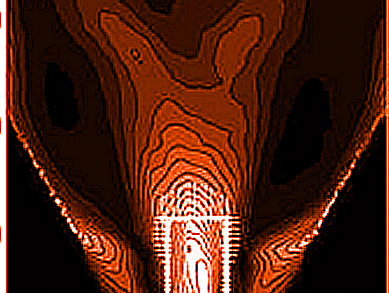The fluidized bed technology is frequently applied for large scale production of granular materials due to its versatility and potential to conduct granulation or agglomeration at low costs. To set realistic population balance models and to accurately predict particle growth kinetics of the granulation process, knowledge of the compartment residence times is mandatory.
Matthias Börner, Mirko Peglow, and Evangelos Tsotsas, Otto-von-Guericke University, Magdeburg, Germany, experimentally investigated various types of fluidized bed equipments used in granulation in order to gain a more detailed insight in particle recirculation behavior and particle residence times in the spray and the drying compartment. The investigated fluidized bed technologies comprise a top-spray process, a spout fluidized bed without and with internal riser, and a spouted bed. The measurements were conducted by using image analysis techniques on an almost 2D particle flow.
The compartment residence times can be influenced by process conditions, comprising the gas flow rate for fluidization and for atomization through the nozzle. In most cases, the residence times and the recirculation time are shortened if the mass flow rate is increased. An exception is the spout fluidized bed with internal riser where the opposite residence time trend can be observed in the drying zone. The compartment residence times can also be influenced by equipment design.
- Particle Residence Times in Fluidized Bed Granulation Equipments,
Matthias Börner, Mirko Peglow, Evangelos Tsotsas,
Chem. Eng. Technol. 2011, 34 (7), 1116–1122.
DOI: 10.1002/ceat.201100050




